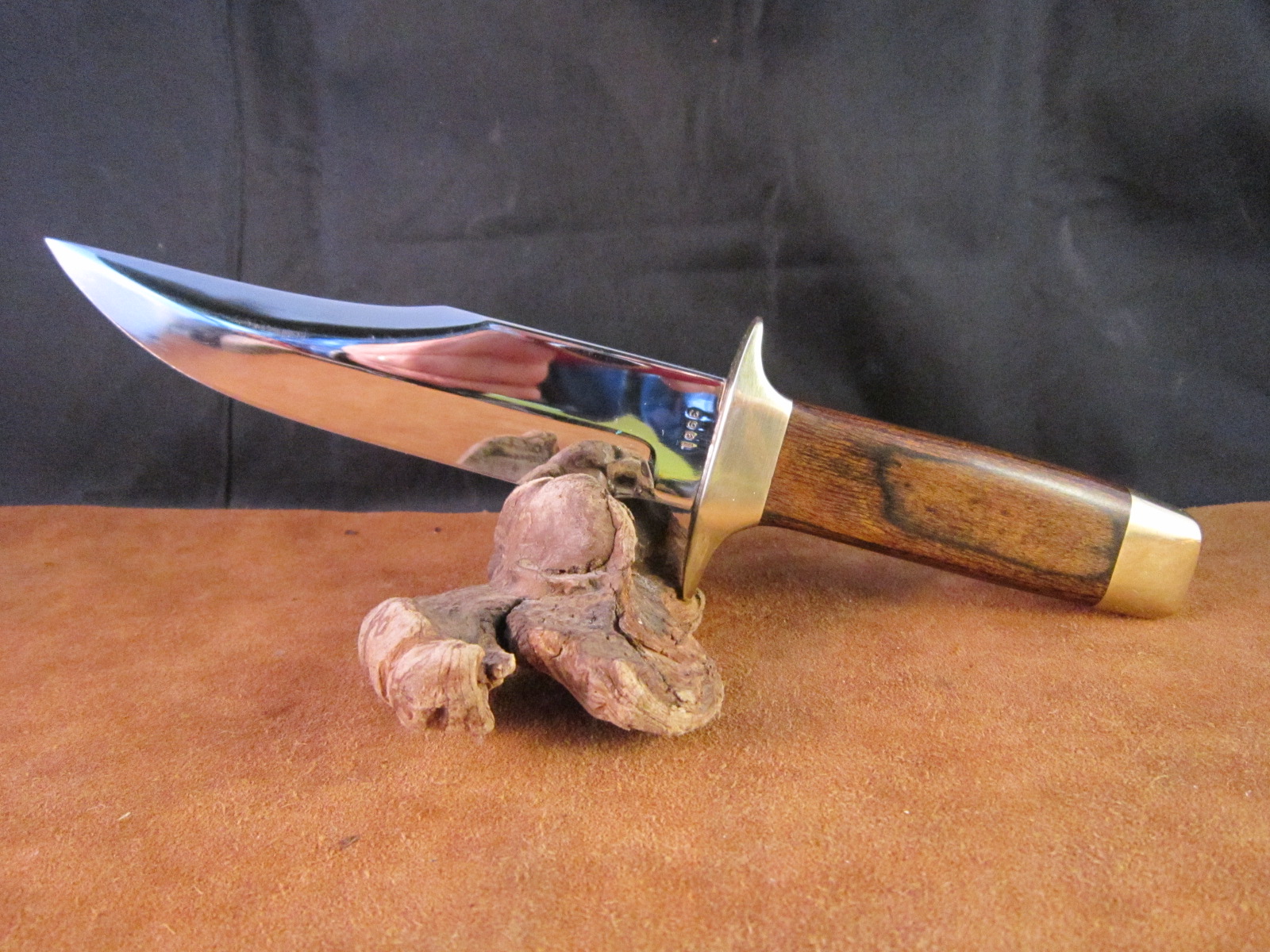Smith & Wesson Blackie Collins designed Survival Series.
In 1972 a Bowie Knife pattern was presented to Smith & Wesson by the Texas Ranger Commission. The design was modified by Blackie Collins and Smith & Wesson felt it would be an excellent entry into the knife market. The knife was produced as the Texas Ranger Commemorative Bowie knife in honor of their 150th anniversary and began a period where S&W forged excellent knives at their in-house knife division producing the Survival series of knives.

After the success of the Texas Ranger Commemorative knife, Smith and Wesson continued to work with the well-known and innovative knife designer Blackie Collins to introduce the company into the knife business. This program was announced in 1975 and seven knives were initially offered. Called the Survival Series they included a Bowie model 6010, Outdoorsman 6020, Survival 6030, Skinner 6070, folding hunter knife 6060, fisherman knife 6050 and a filet knife 6040. The 6010, 6020, 6030 and the Texas Ranger Bowie were forged by S&W. The 6070, 6040 and 6050 were produced by S&W using stock reduction and the Folding Hunter 6060 was produced by Bowen or Alcas in the US for S&W.
The blades were forged from modified 440 Series Stainless Steel. A total of 47 operation from forging to hand polishing are performed on the blade before fitting to the handle on the Survival knife. The amount of work necessary for these knives caused S&W to fall behind on production and delivery to the retailers. Smith and Wesson produced in house a few other knives but none that required the amount of hand fitting as this series. The most beautiful knives S&W ever produced in house.

The factory geared up production to manufacture a standard Bowie knife similar
in design to the Texas Ranger. Model number 6010 this handcrafted knife was a stout bowie in a traditional design.

A general-purpose hunting and camping knife with a 5 inch blade and a hollow handle to store survival items. This was called the Outdoorsman, model 6020.

To increase their versatile knife line, Smith & Wesson manufactured the Survival
knife model 6030. This also had a hollow handle cavity covered by a solid brass screw-on
cap. The handle was round and blended into a double quillon cross guard for
maximum workability and production. The 5 inch blade had a wide flat spine
and a sharpened false edge. The factory hoped that this 10-ounce knife would
gain popularity with campers and back-packers.

A 3 inch dropped point blade knife, designed for Smith & Wesson by Blackie
Collins, and was offered to the hunter. Its handle was tapered and contoured to fit
into the hand for ease in skinning large or small animals. This was called the
Skinner model 6070.

For the individual who did not like fixed blade knives, the factory offered a 3-inch blade lock-back knife called the Folding Hunter model 6060. This was a rugged, handsomely made knife with nickel silver bolsters and sold with a belt sheath. The factory did not have the capability to manufacture this particular item. They contracted with Alcas or Bowen Knife to produce the folding hunter according to Smith & Wesson’s specifications.

To complete their line of knives, the factory offered the fisherman two fixed blade
knives. These were called the Fisherman Fillet model 6040, designed with a 6 inch blade,
and a general-purpose knife model 6050 with a stiffer 5 inch blade simply called the Fisherman knife.

The fisherman knife model 6050 was also handy as an all-purpose knife.

These seven styles rounded out the Smith & Wessons complete knife line. The
company had put together a group of knives with broad appeal that would offer
advantages of custom-made products but at reasonable prices.
Everything was done to build in quality and custom appearance. The blades were
forged, utilizing 120 plus years of experience in steel forging. The guards and
pommels were hand fitted and silver soldered to the blade. The handles were
hand fitted and made of a special pressure impregnated natural wood called
Wessonwood, which gave maximum durability for a long-lasting life. The edge of
each knife was hand honed by individuals specially trained to complete this
operation and provide a sharp edge blade direct for the factory.
Production numbers
- Texas Ranger Bowie – 20,000
- Bowie 6010 – 15,000
- Outdoorsman 6020 – 13,000
- Survival 6030 – 17,500
- Collector Series – 3,752 (800 complete)
- Skinner 6070 – 15, 500
- Fisherman 6040 – 4,500
- Fisherman Fillet 6050 – 4,500
- Folding Hunter 6060 – 35,000
This information was gathered from the book: "The Knives of Smith & Wesson" by Clarence E. Rinke 1990 (Limited publication of 1,000 books).
This is an amazing book with a lot of information about all the knives as well as the Special Production knives that were produced from this series as well. I highly recommend it if you can find one to buy.